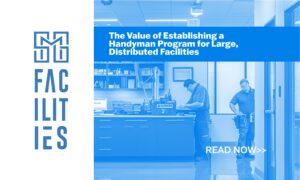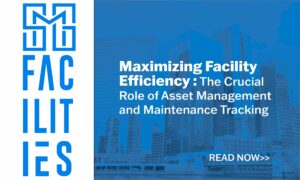Effective capital planning is a crucial aspect of managing multi-site facilities. Without proper planning and allocation of resources, these facilities can face unexpected breakdowns, escalating repair costs, and operational disruptions. To ensure the smooth and efficient functioning of such facilities, it is essential to leverage historical repair and maintenance data. In this blog, we will explore the importance of utilizing historical data for better capital planning in multi-site facilities.
The Power of Historical Data
Historical repair and maintenance data are a treasure trove of information for facility professionals. This data provides insights into the past performance of equipment and infrastructure, offering a wealth of knowledge that can guide future decision-making. Here’s why it’s vital to harness this valuable resource:
- Predictive Maintenance
Historical data enables facility professionals to identify patterns and trends in equipment failures and breakdowns. By analyzing this information, they can predict when and where maintenance is likely to be required. Predictive maintenance not only minimizes downtime but also optimizes resource allocation, ensuring that critical assets are maintained when needed, rather than on a fixed schedule.
- Cost Reduction
Understanding the historical costs associated with repairs and maintenance allows for more accurate budgeting and allocation of capital resources. With this data, facility managers can develop cost-effective maintenance plans that prioritize critical areas while reducing unnecessary spending. This leads to lower operational costs and better financial stewardship.
- Asset Lifecycle Management
Multi-site facilities often house a wide range of assets, from HVAC systems to food service equipment. Historical data aids in tracking the lifecycle of these assets, helping facility professionals make informed decisions about repair, refurbishment, or replacement. This proactive approach maximizes the value of existing assets while avoiding unplanned replacements and the associated costs.
- Performance Benchmarking
By comparing the historical data of various sites within a multi-site facility, managers can identify underperforming sites and equipment. Benchmarking these outliers against the high performers can reveal opportunities for improvement, leading to more consistent and efficient operations across the entire facility network.
- Vendor and Supplier Relations
Having historical data on equipment performance can strengthen relationships with vendors and suppliers. It provides a basis for negotiating maintenance contracts, warranties, and service agreements. Vendors are more likely to offer favorable terms when they see a commitment to data-driven maintenance practices.
Challenges and Best Practices
Leveraging historical data isn’t without challenges. Here are some best practices to overcome them:
- Data Collection and Organization: Ensure that historical data is collected systematically, and it’s organized in a manner that’s easy to access and analyze. Consider using Computerized Maintenance Management Systems (CMMS) to help with data management.
- Data Quality: The accuracy of historical data is essential. Regularly audit and update data to maintain its reliability.
- Analytical Tools: Invest in analytics tools and software that can help process and make sense of the data effectively.
- Collaboration: Encourage collaboration between maintenance and operations teams to ensure the data is not only collected but used for decision-making.
- Continuous Learning: Stay up to date with industry trends and best practices for data analysis and capital planning.
Leveraging historical repair and maintenance data is essential for effective capital planning in multi-site facilities. It empowers facility professionals to make informed decisions, reduce costs, optimize maintenance schedules, and enhance overall operational efficiency. By harnessing the power of this data, multi-site facility managers can ensure their facilities run smoothly, minimize downtime, and maintain a competitive edge in today’s fast-paced business environment. Contact SMG Facilities today and see how they can help you analyze your data to make better capital decisions and help drive efficiencies across your distributed portfolio..





